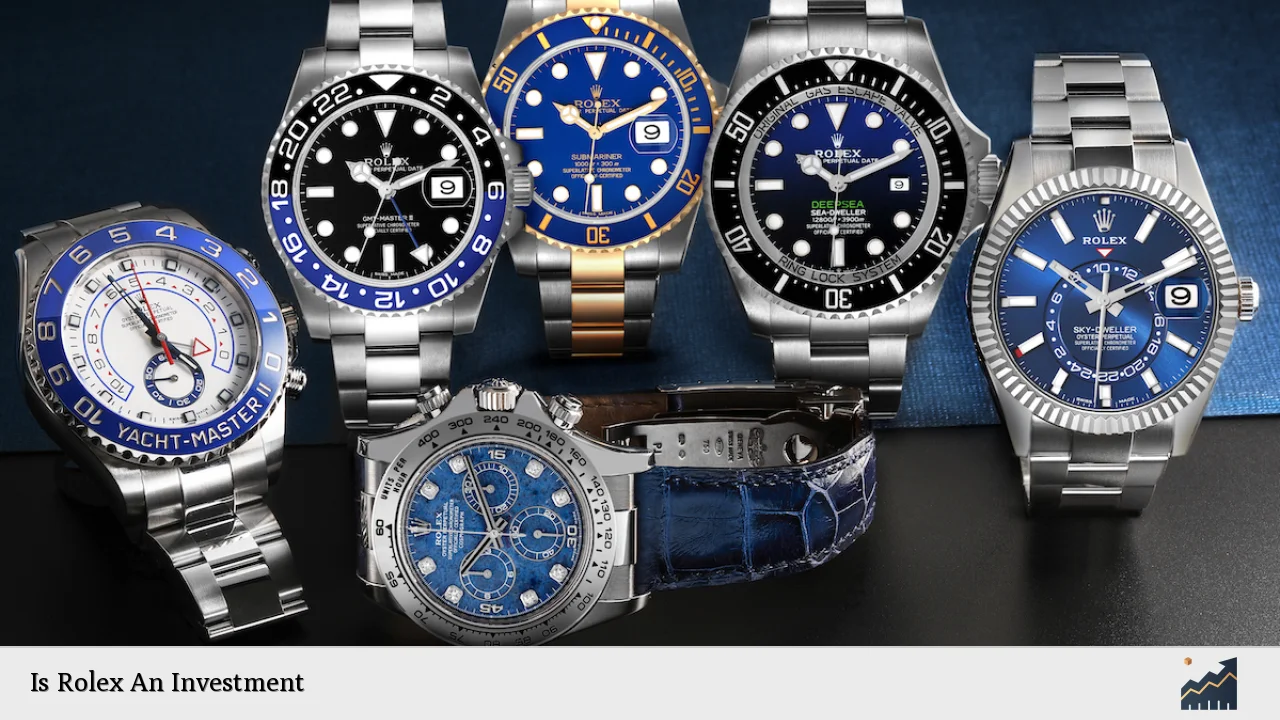Investing in luxury watches, particularly Rolex, has become an increasingly popular topic among individual investors and collectors. Rolex watches are not just symbols of status and luxury; they also represent potential financial assets capable of appreciating in value over time. However, the question remains: is investing in a Rolex truly a sound financial decision? This article delves into the complexities of investing in Rolex watches, examining market trends, implementation strategies, risks, regulatory considerations, and future outlooks to provide a comprehensive analysis.
| Key Concept | Description/Impact |
|---|---|
| Market Demand | Rolex watches are highly sought after due to their craftsmanship and brand prestige, leading to significant price appreciation. |
| Limited Production | The scarcity of certain models contributes to their value retention and potential for appreciation. |
| Historical Performance | Many Rolex models have shown consistent price growth, outperforming traditional investments like stocks. |
| Market Fluctuations | Economic factors can impact luxury goods; understanding market dynamics is crucial for investors. |
| Expertise Required | Investors need knowledge of the luxury watch market to make informed purchasing decisions. |
Market Analysis and Trends
The luxury watch market has experienced significant fluctuations over the past few years. While the overall watch market has faced challenges post-pandemic, Rolex has maintained a strong position. According to data from WatchCharts, Rolex prices have increased by approximately 20% over the past five years, averaging about 10% annually. This growth has often outpaced traditional investment vehicles like the S&P 500 index.
Current Market Statistics
- Rolex Market Index: As of late 2024, the Rolex Market Index stands at €19,902, reflecting a decrease of 6.3% over the past year but still indicating resilience compared to other luxury brands.
- Price Predictions: Analysts predict that prices for new Rolex watches will increase by an average of 4% in 2024 due to ongoing demand and limited supply.
- High-Demand Models: Models such as the Submariner, Daytona, and GMT-Master II continue to be top performers in terms of value retention and appreciation.
Implementation Strategies
Investing in Rolex watches requires careful planning and strategy. Here are some effective approaches:
- Model Selection: Focus on iconic models known for their historical performance and demand. Models like the Submariner and Daytona are often recommended due to their consistent appreciation.
- Condition Matters: The condition of the watch significantly impacts its resale value. Investing in well-maintained or unworn pieces can yield better returns.
- Timing the Market: Understanding market cycles is crucial. Buying during downturns or when prices stabilize can lead to better investment opportunities.
- Expert Consultation: Engaging with experts or reputable dealers can provide insights into market trends and help authenticate purchases.
Risk Considerations
While investing in Rolex can be lucrative, it is essential to consider potential risks:
- Market Volatility: Economic downturns can affect luxury spending. Investors should be prepared for fluctuations in demand.
- Authenticity Risks: The luxury watch market has its share of counterfeit products. Ensuring authenticity is critical to maintaining value.
- Liquidity Issues: Unlike stocks or bonds, selling luxury watches may take time, especially if market demand fluctuates.
- Changing Trends: Consumer preferences can shift; what is desirable today may not hold the same appeal tomorrow.
Regulatory Aspects
Investors should be aware of regulatory considerations when investing in luxury goods:
- Tax Implications: Depending on jurisdiction, capital gains tax may apply when selling a Rolex for profit. Understanding local tax laws is crucial.
- Import Regulations: If purchasing internationally, be aware of import duties and regulations that may affect overall costs.
Future Outlook
The future of Rolex as an investment appears promising despite recent market fluctuations. Factors contributing to this outlook include:
- Continued Demand: The brand’s strong reputation ensures ongoing interest from collectors and investors alike.
- Innovation and Scarcity: Rolex’s commitment to limited production runs maintains exclusivity and desirability among consumers.
- Market Adaptation: As economic conditions evolve, Rolex’s ability to adapt its marketing strategies will play a vital role in sustaining its investment potential.
Frequently Asked Questions About Is Rolex An Investment
- Are all Rolex watches good investments?
Not all models appreciate equally; focus on high-demand models like the Submariner or Daytona for better investment potential. - What factors influence the value of a Rolex?
The model’s rarity, condition, historical significance, and current market demand all play critical roles in determining value. - How do I know if my Rolex is authentic?
Consulting with certified appraisers or reputable dealers is essential for verifying authenticity. - Is investing in pre-owned Rolex watches advisable?
Yes, pre-owned models can offer better value as they often appreciate after initial depreciation. - What are the risks associated with investing in luxury watches?
Market volatility, authenticity concerns, and changing consumer preferences are key risks to consider. - How should I store my Rolex for investment purposes?
Store your watch in a safe place with controlled temperature and humidity to maintain its condition. - What should I consider before selling my Rolex?
Market conditions, timing for sale, and maintaining the watch’s condition are crucial factors before selling. - Can I use my Rolex as collateral for loans?
Yes, some financial institutions accept luxury watches as collateral; however, terms vary widely.
In conclusion, while investing in a Rolex watch can be a rewarding venture under the right circumstances, it requires careful consideration of various factors including model selection, market trends, and potential risks. By staying informed about current market dynamics and seeking expert advice when necessary, individual investors can navigate this unique asset class successfully.

